Wie man eine DIY UV-Härtungsstation für Harz-3D-Drucker herstellt
Whilst you can Buy UV Curing Stations, or UV Curing Chambers online they are very expensive. I just don’t have the money to spend what they cost! So instead I built my own and I’ll show you the steps in our How to Make a DIY UV Curing Station for Resin 3D Printers guide.
Ok, wenn du mir folgst Facebook oder Instagram you’ll see from my posts I love my 3D printer. After buying this, however, I was surprised (due to my over-excited lack of actual research) that the parts you print actually need to be fully cured post-print with UV light.
Als mein erster Druck von der Platte kam, suchte ich nach etwas, das ausreichen würde. Zum Glück hatte meine Frau eine UV-Cure-Station, die für Nagelgele hergestellt wurde. Also habe ich das die erste Woche benutzt, bis es starb.
Still unable to afford one of the retail options, I was looking at how to make a decent cure station. Many people will just stick a print in the sunlight, but living in the UK during the winter, we don’t get much sun. Even when we do it’s probably raining anyway.
There’s a lot to consider when curing resin, if you want to cure it properly without it becoming too brittle or warping you need to regulate temperature and light intensity. You also need to balance it across the surface. When I was making base toppers for my miniatures and using my wife’s nail curing station thy started to curl from being left under the direct light.
Whilst you can’t really regulate temperature with a DIY Curing Chamber, you can easily keep the part rotating to get more even coverage.
How to make a DIY UV Curing Chamber – Parts
If you have a Resin printer, I’ll just assume you have plenty of Isopropanol for rinsing the parts and Nitrile gloves for handling uncured resin. Not that you need them for making this. I just didn’t realise how many gloves or how much Isopropanol I’d need for resin printing. so if you rea reading this before getting a printer, let me just say you need this stuff. Lots of it.
Let’s have a look at what you need to make a cure station
Leere Farbdose
The reason I’ve picked a paint tin is becasue teh inside is already reflective. You will lose a lot of the UV’s power in reflected light but it’s still better to have some than none. Some people have gone as far as lining the inside with Aluminium tape to increase the reflectivity of the surface. For the amount of UV light that would reflect over the normal lining of a tin, I just couldn’t see it was worth the effort. But go ahead and do that if you want.
In Bezug auf die Größe möchten Sie eine 5-Liter-Farbdose (1 Gallone). Ich habe es mit einer kleineren 2,5-l-Dose versucht, aber sie war für die meisten größeren gedruckten Teile zu klein.
UV LED Lichtstreifen
For this guide, I used a 5M LED Light strip, pretty much the cheapest I could find for 5m. You can get 10M and double up for more intense light. But I’ve found 5M is just fine.
Drehständer
Ich mag diese für die Anzeige von Modellen, wenn sie fertig sind. Sie sind wirklich billig, wenn Sie herumjagen. Es gibt tatsächlich 3 Varianten. Eine, die von Licht angetrieben wird. und eine, die die Option hat, eine Batterie hinzuzufügen. Der ohne Batterieoption hat noch das Fach dafür, nur keine Anschlüsse, an die sich der Akku anschließen kann.
If you get the super cheaper one, this probably doesn’t have the battery, probably. this doesn’t mean the more expensive one will let you add a battery. Anyway, I got the cheap one because the UV lights will power it anyway.
UV Schutz Sicherheit Brille
You’re working with UV Lights, protect your eyes.
Bohren (optional)
Depending on how you follow the steps ahead you may want to use a drill so that the power lead comes out of the bottom of the tin. You can have it coming out of the top if you want to do it the easy way but you won’t be able to close the lid flush. I drilled a hole for the lead becasue the DIY Cring Chamber looked neater as a finished item.
Ihr Anruf.
You’ll need to measure the diameter of your power cable. I used a 12mm flat wood drill bit for mine.
Wie man eine DIY UV-Härtungskammer macht
Step 1 – Assemble Components
Machen Sie einfach alles fertig. Sie benötigen Ihre leere Farbdose, Ihren Bohrer und den UV-LED-Streifen.
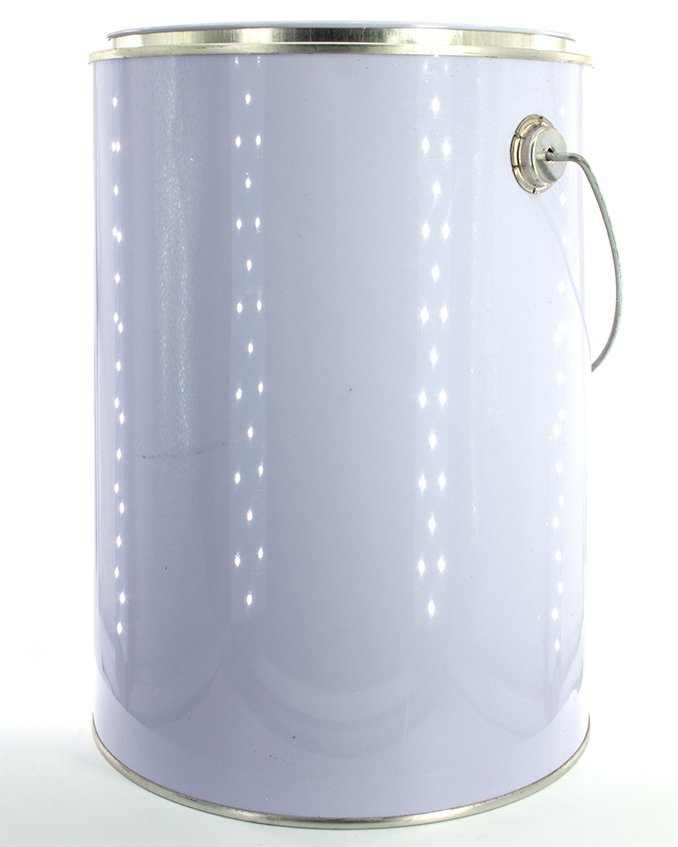
Step 2 – Drill a hole
You can skip this step and just have the power lead coming out of the top. but again the lid won’t sit flush and this just looks neater.
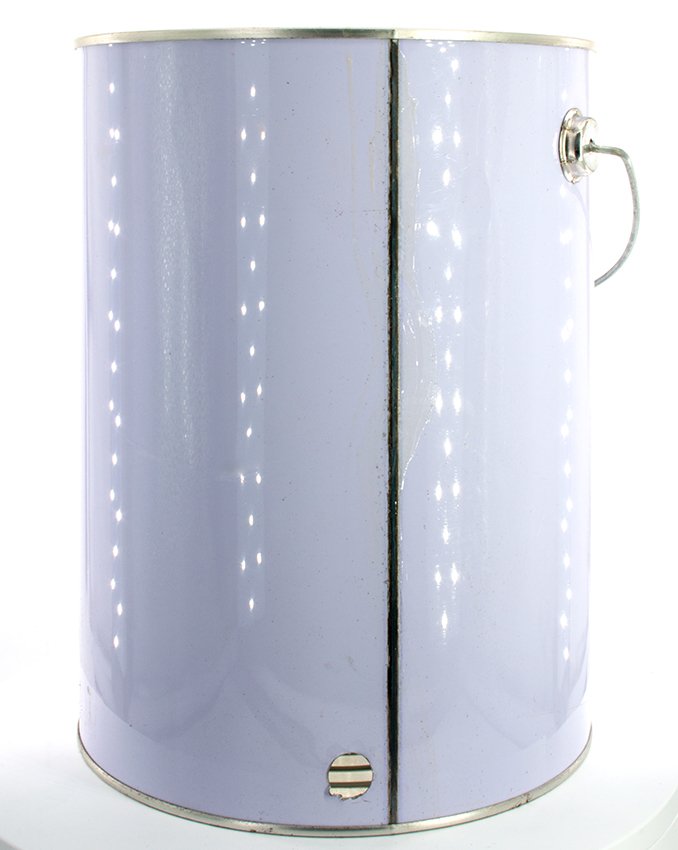
Go careful when doing this, these are really brittle tins and the drill can send shards flying everywhere. Go slow and steady, don’t push, just let the drill score the tin until it punches through.
Step 3 – Test Your LED Strip
I’ve seen a few people online mention how flimsy these Cheap LED strips can be. take a minute to make sure it works before your next step.
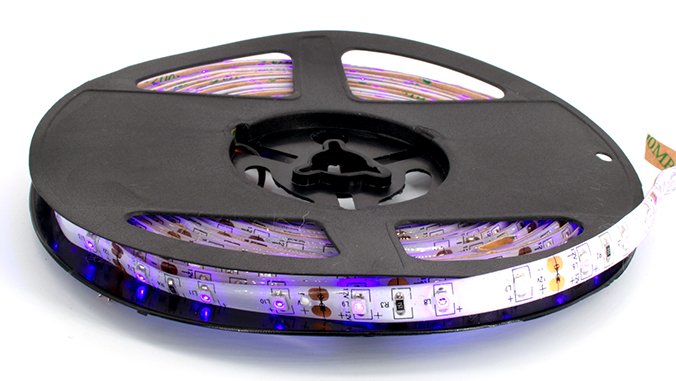
Step 4 – Measure the Tin & LED Strip
Depending what size tin you got you may need to get maths involved so you can evenly space the Led strip around the inside. Thankfully for me, I remembered some maths. thankfully for you, if you get the paint Tin size I recommended I’ve done the spacing here for you.
Um einen gleichmäßigen Abstand zu ermitteln, musste ich ungefähr wissen, wie oft ich einen 5 m langen LED-Streifen um den Umfang dieser bemalten Dose wickeln konnte.
Nun, jeder kennt C = πD (richtig?)
Sie können Mathe immer einfach vermeiden und ein Maßband verwenden, das um die Dose gewickelt ist.
Ich habe also einen Blechdurchmesser von 17,5 cm. 17,5 x π = 54.98cm (let’s say 55cm)
Die Länge des UV-LED-Streifens beträgt 500cm. 500/55 ist also 9.1. so kann ich dies 9 mal um die Innenseite der Dose wickeln.
Die Höhe der Dose beträgt 22,5 cm. 22,5 / 9 ist 2,5 cm. Ziemlich einen Zentimeter
Hey cool, ich habe ein Zolllineal!
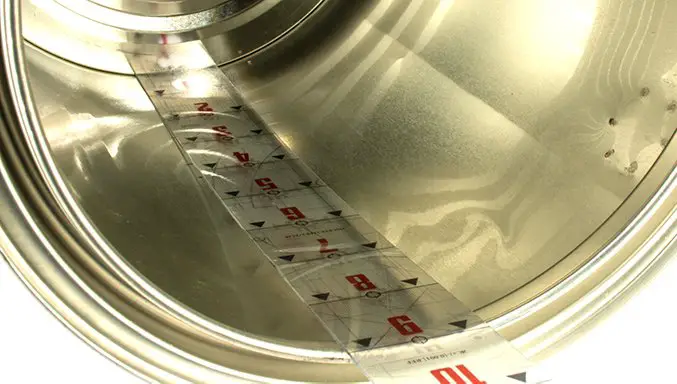
Step 5 – Mark the Tin
Zeichnen Sie mit einem Markierungsstift die gleichmäßig verteilten Linien auf der Innenseite Ihrer Dose. Dies ist eine Anleitung, die Sie im nächsten Schritt befolgen sollten
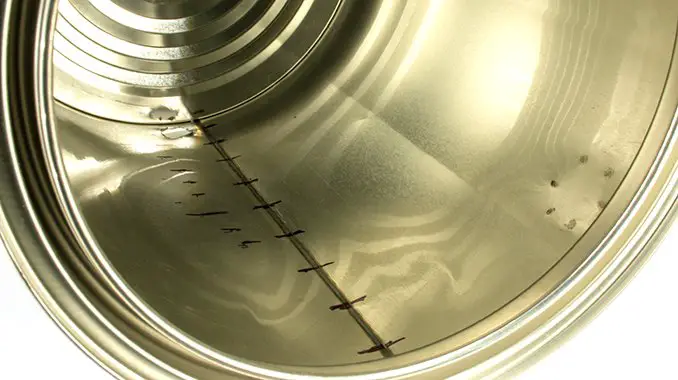
Step 6 – Stick in The LED Strip
Führen Sie Ihr Netzkabel durch das Loch im Boden der Dose. Kleben Sie dann von unten beginnend den LED-Streifen um die Innenseite der Dose. Versuchen Sie, Ihre Richtlinien bei jeder vollen Umdrehung so gut wie möglich zu befolgen, um einen gleichmäßigen Abstand zu gewährleisten.
I left a little bit of LED sticking out of my tin near the power hole so I could see from the outside when it was on. It’s just enough so that when I flick the lights off in my office I can see it glowing, reminding me to actually turn it off.
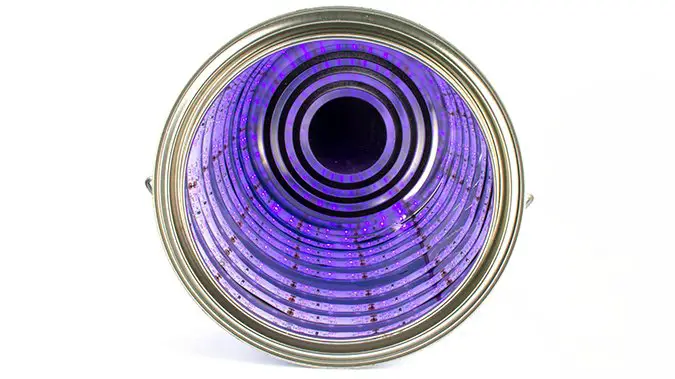
When you are done you shouldn’ have any need to trim the LED strip as it should be a perfect fit. Assuming you measured correctly or got the bits we suggested above. any excess can just be doubled up a bit toward the top.
Step 7 – Add the Solar Powered Display Turntable
Wenn Sie möchten, stecken Sie es mit doppelseitigen Pars hinein, aber ich habe es einfach in den Boden der Dose gelegt, damit ich es bei Bedarf ersetzen kann.
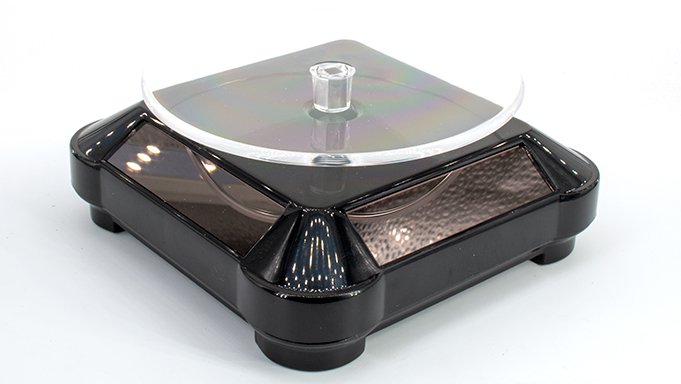
Manche Leute beschichten den Plattenteller gerne selbst mit Folienband oder Alufolie. Nach meiner Erfahrung kann es bei Ihrem Modell zu einem Versickern von Harz kommen, wodurch sich die Folie verfärbt und abreißt.
How to make a DIY UV Curing Box – Complete
And that’s it. Once you have rinsed off your resin Model in Isopropanol and let it evaporate. just place it on top of the turntable and plug it in. The UV lights will power the turntable to keep it spinning.
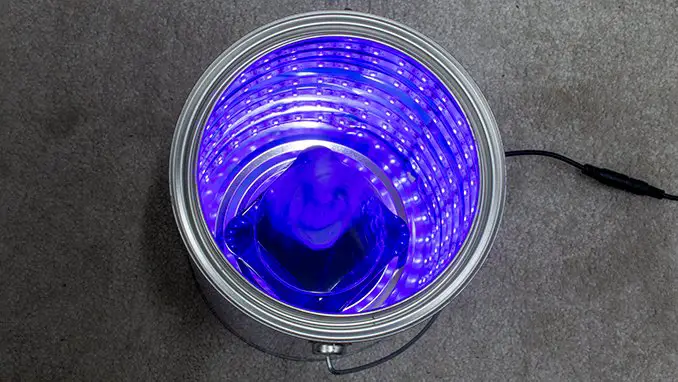
These LED strips are really low power so I tend to leave my parts in for anything up to an hour, then flip them over and do an hour on the other side. As I’m writing this I’ve just remembered I’ve left a part curing for the last 4 hours becasue I forgot about it!
I just checked it, it’s fine, fully cured and no warping.
Was denkst du darüber? Lernprogramm? Bitte lassen Sie es uns in den Kommentaren wissen.
If you like what we’re doing here you could really help encourage more content with a share on any social media platform.
Klickt einfach auf die Teilen Links weiter unten (oder am linken Rand wenn ihr am PC oder am Tablet unterwegs seid)
Ihr möchtet immer auf dem laufenden bleiven? Dann abonniert den Blog gerne via RSS in der Sidebar oder per Email weiter unten
(Auf mobilen Geräten befindet sich die Sidebar weiter unten.)
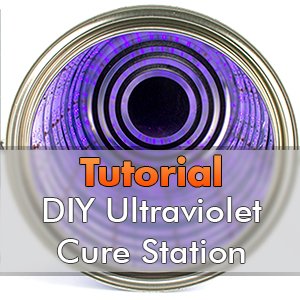


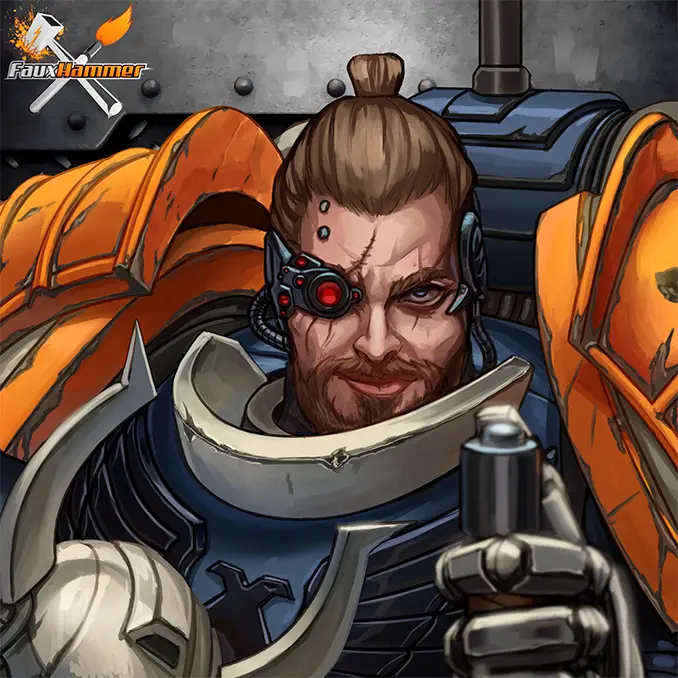
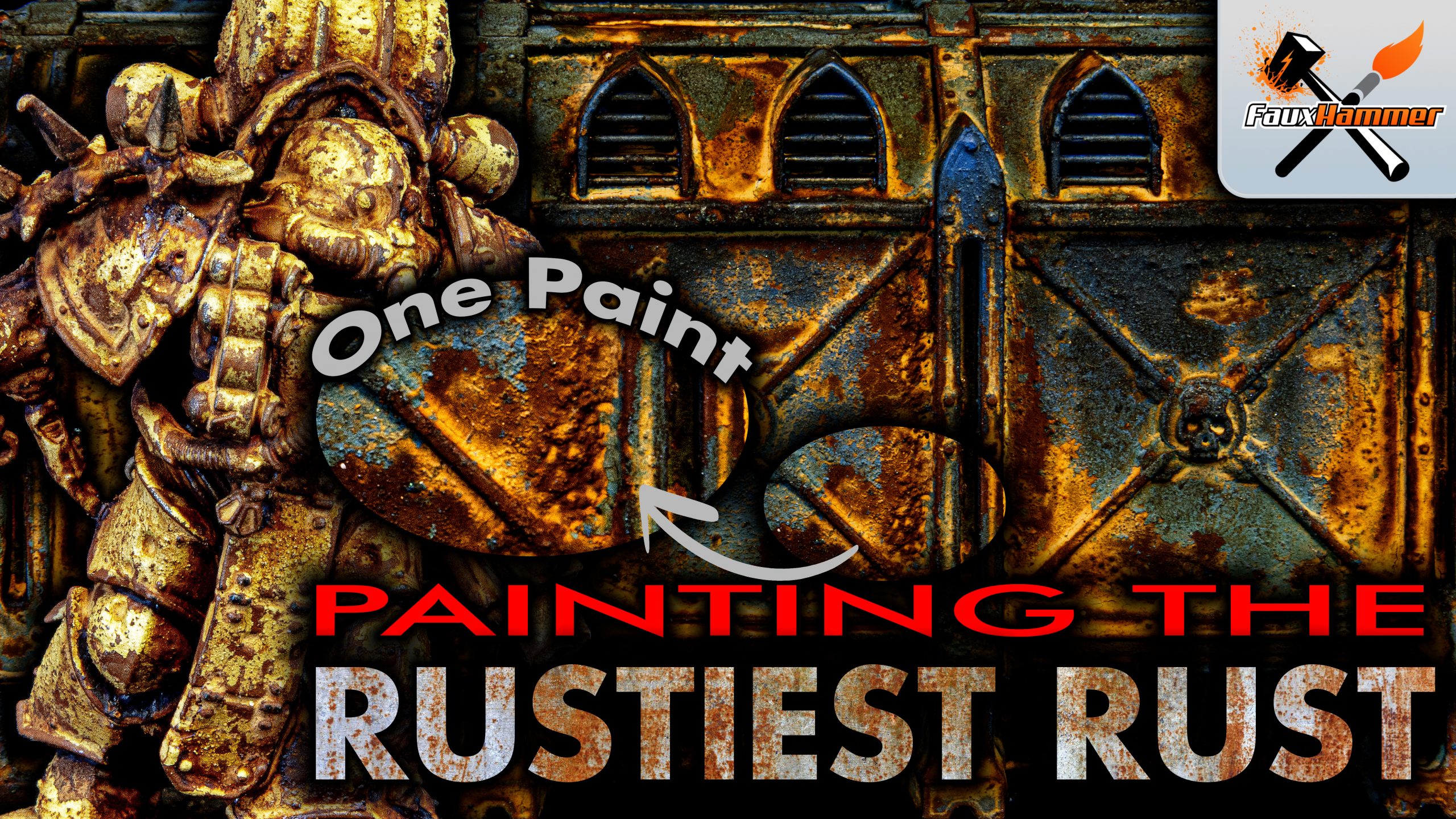
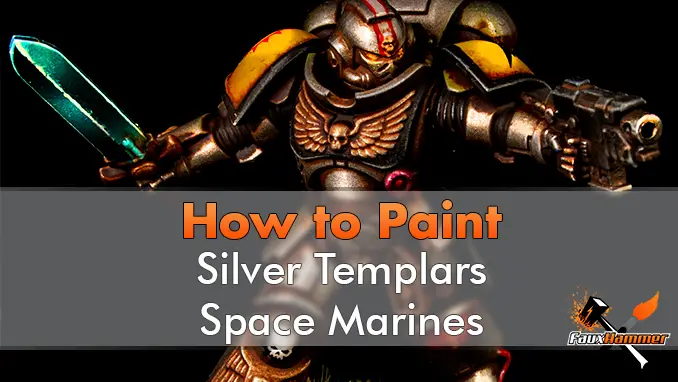
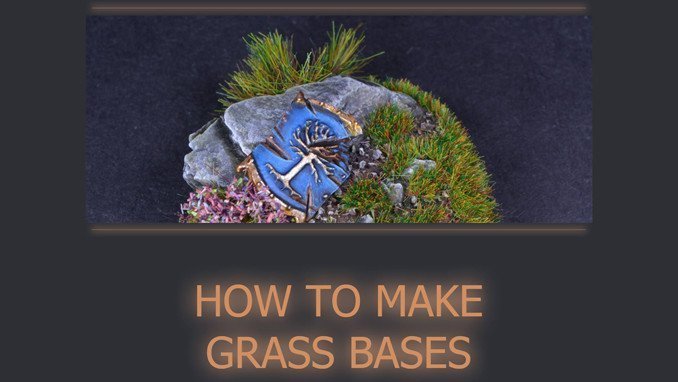
Why you need rotating stand when lights are wound all around symmetrically? Also if one creates platform made of transparent plastic few inches above the bottom turning part over should not be needed either since it will be lit from the bottom as well